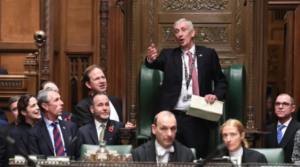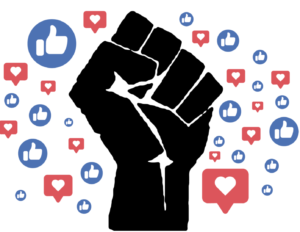
Upon the emergence of COVID-19 cases outside of China in January 2020, few could predict the degree to which the most powerful countries in the world would be impacted by the disease. Countries with the least infrastructure were expected to take the biggest hit, especially near the region of the onset of the disease in East Asia. One Forbes infographic published in January 2020 depicting countries’ preparedness for handling a pandemic suggested that the U.S. was the most well-equipped for the coronavirus, followed by the U.K., the Netherlands, and other European countries.
Yet as we have come to find out, these predictions were sorely mistaken. The U.S. now lies at the top of the list of COVID-19 deaths due to failed lockdowns and politicized mask-wearing. In Europe and EU nations, COVID-19 mitigation has been considerably better. However, bars, indoor dining and small businesses still remain closed for the most part there. Instead of the nations previously predicted to be best-equipped for a pandemic, we have found unlikely victors in the battle against the coronavirus: countries like Vietnam, Taiwan, and New Zealand have come out with nearly no COVID-19 deaths due to early, total lockdowns and effective contact tracing that has allowed for a commendable preservation of life as usual for most of 2020.
I think for a long time now, many of us have gotten used to the idea that the U.S. has simply fallen behind all other nations in its handling of the coronavirus. Our own misery may have even blindsided us from paying attention to the EU’s shortcomings. In the U.S., we have been constantly barraged with COVID-19 developments and unprecedented death tolls from our leaders everyday, giving the sense of a never-ending state of isolation and devastation in our country. Some of us may have even been looking jealousy at Europe during the middle stages of the pandemic and their better systems of virus mitigation. However, a key player in the equation of national recovery reveals the also-flawed EU nations’ coronavirus handling: vaccine rollout.
As vaccines started to be approved, we suddenly found some of the U.S.’ unique preparations in the public health arena paying off while EU nations fell short — and by a substantial amount for that matter. In the midst of the national disaster that was coronavirus infections, the U.S. prioritized vaccine procurement through Operation Warp Speed, a massive public-private partnership that helped accelerate the development of vaccines. While the U.S. certainly has not reached a vaccinated majority of the population like Israel or the U.A.E., it now sits with a hefty 26% of the population vaccinated as of March 2021. Most EU countries, even larger ones like France and Germany, still have less than 10% of their population vaccinated. It’s no small difference: this discrepancy might even be what gets U.S. life and economy back on track before EU nations.
To explain the EU’s vaccine rollout failures, we first have to examine the purpose of the EU and why member nations choose not to vaccinate their citizens through their own government. The EU is set up to frequently operate as a whole rather than individual nations, whether that means making European travel more accessible with a shared passport, free education across countries, encouraging trade or providing a system to easily resolve disputes. In moments of crises like the coronavirus pandemic, this means trying to vaccinate people in an equitable way, whether they live in Germany or Bulgaria — even though these nations have very different access to resources on their own. For someone in Bulgaria, this would be great news since the EU would help vaccinate citizens faster than their small, less-powerful government would on its own, while in Germany, people would likely be less pleased.
Reporter Alex Ward explains this transaction in the Vox podcast “Worldly,” stating that in the EU, “You become a bigger bloc, a more powerful bloc, one with more people and more money than the United States, but you move slower in times of crisis and on bigger issues whether it’s refugees or pandemics.”
Though I agree with Ward on his statement, I do think there is more nuance to the issue of slow vaccine rollout. Only evaluating the EU’s structure does not account for the way in which its executive branch — the European Commission — procured vaccines. The commission prioritized low prices for vaccines and ensured vaccine companies could be sued if there were problems with their product. This lies in stark contrast to the U.S., where the Trump Administration didn’t care about cost or the vaccine company liabilities for potential long-term side effects in implementing Operation Warp Speed. The U.S. government supplied Big Pharma with billions of dollars in subsidies to increase vaccine testing and manufacturing and bought millions of doses without knowing which would be effective. As Georgetown University Professor Lawrence Gostin said, “The U.S. and the U.K. locked in their supplies before they knew the vaccine was going to work. The EU was more risk-averse.”
The FDA also moved much faster to approve vaccines than the European Medicines Agency, which wanted to take extra precautions to ensure the vaccines were safe. Once they were finally approved, the EU realized it had ordered too few doses, which puts it where it is now — at a vaccine shortage.
The EU’s vaccination process has been further prolonged by the recent debacle surrounding the AstraZeneca vaccine and hesitancy surrounding its safety. As of now, the FDA has not yet approved AstraZeneca in the U.S. while the EU and U.K. has already implemented the vaccine. However, around mid-March, there were 37 reported cases of complications due to the AstraZeneca vaccine, prompting more than a dozen European countries to stop the distribution of the vaccine. These complications mainly pertained to blood clots, which were not observed in the trials and reflected a higher number than initially expected of the vaccine.
Although there is little evidence that the AstraZeneca vaccine causes blood disorders, it’s still too early to dismiss that risk, leaving EU nations with a difficult choice: continue vaccine rollout and risk vaccine complications or be extra careful about vaccines while prolonging the pandemic. Some have even alleged that Europe’s pause on vaccinations has political motivations because governments are afraid of continuing vaccinations while neighboring countries have halted.
Clearly, the EU has failed on many fronts on handling the COVID-19 vaccinations, while the American rollout has been much more rapid. But of course, vaccine distribution isn’t everything. The U.S. has endured over a year of economic suffering and more than 500 thousand deaths. Operation Warp Speed, though producing fruitful outcomes, was a project executed by the Trump Administration with political motivations to perhaps turn a side eye to that grim number, and instead attribute the development of a vaccine to Trump’s candidacy for the 2020 presidential election. Furthermore, we have not even begun to see the long-term outcomes of the operation’s massive price tag or vaccine companies’ immunity from liability if something goes wrong with the vaccines. Though the EU’s structure can deter its nations from vaccinating faster, they consciously made a trade-off in that partnership to prioritize equity, low prices and safety for their citizens.
I think that while both the U.S. and EU undoubtedly have had less-than-stellar performances in their handling of this pandemic, the EU’s strategy is more likely to pay off in the long run. For me, it’s too hard to acquiesce so many human lives for a speedy vaccination process in the U.S. But who knows? Prolonged economic stagnation may prove to have similarly catastrophic consequences for the EU. Whichever the case, only time will tell which western powers handled the coronavirus better.



